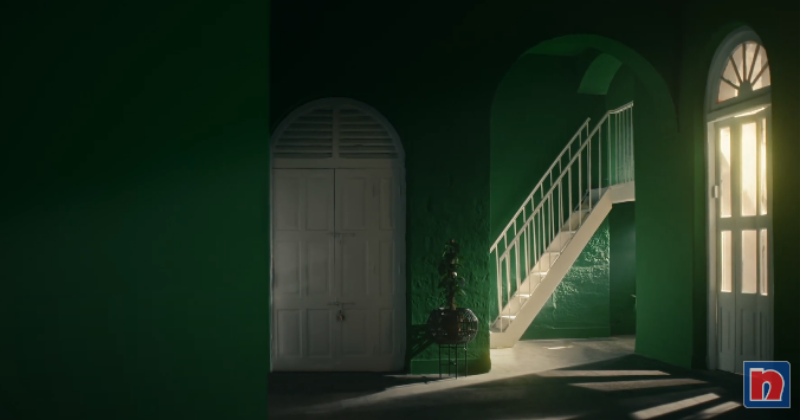The Sound of Paint
Published in Mar-Apr 2022
An increasing number of studies posit that people who are visually impaired experience enhanced abilities in terms of their remaining four senses – smell, taste, touch and hearing. Possibly inspired by this, Nippon Paint recently rolled out their campaign, ‘Rung Sab Kay Liye’, which depicts a visually impaired person ‘hearing’ colours. For example, she hears the sound of glitter as it drips (gold), crashing waves (blue) and rustling leaves (green).
Nippon Paint’s campaign was released a month before Ramzan in March, a particularly opportune time because this is when “most homeowners think about redecorating for Eid,” says Atiya Zaidi, ECD, BBDO Pakistan (Nippon Paint’s creative agency).
Samad Zaheer, President, Nippon Paint, says the campaign is a departure from their previous ones that focused on the brand as a high-end product with Japanese antecedents. The ask now, says Zaheer, is to increase Nippon’s consumer base and “the objective was to reposition Nippon Paint as a mass-market product.” To this end, it was decided to adopt an emotional-centric approach rather than a functional one, as “deep down we are all more emotional than functional.”
According to Zaidi, the insight that led to the big idea was simple. “Colours are not only visual. They can be memories, scents and even sounds. Red can be a feeling, an emotion, a trigger, a warning; it could be love, anger, or a mouth-watering box of McDonald’s French fries. We wanted to capture the all-encompassing nature of colours by portraying a person who cannot see colours. Visually impaired people learn about colours through sensorial stimuli and we came up with the idea of a TVC that asks viewers to close their eyes and use their other senses to ‘translate’ the colours because visually impaired people ‘feel’ them. Doing so brought the idea full circle to ‘Rung Sab Kay Liye’.”
Elaborating the point, Zaidi adds that human beings are visually biased and rely more on sight than on any other senses. “The fact that leaders are called visionaries points to this unconscious bias. What if we removed this sense and conveyed an idea through other senses? Sound was the perfect medium to communicate the idea of the inclusivity of colours. We asked ourselves, ‘How can we make the audience feel the colours?’ and the idea of watching an ad with your eyes closed was born.”
Unlike previous campaigns, homeowners were the target audience; men (“the decision-makers”) and women (“the strongest influencers”) aged between 25 and 60, rather than retailers (usually a prime market for paint). This decision, says Zaheer, was based on the idea of “giving the decision-making power back to the end consumer and driving home the message of ‘Sab Ke Liye’.” Nevertheless, it has to be underlined that Nippon’s target audience also includes the Original Equipment Manufacturer (OEM) segment (automobile brands such as Honda, MG and KIA), a market segment that has doubled the brand’s market share in the last two years.

According to Zaheer, the response has been positive so far: “We believe the campaign will gain us favourable results in terms of brand awareness and eventually, higher sales.”
Looking at the broader market picture, Zaheer points out that despite the findings of a study on the paint sector conducted by the Pakistan Credit Rating Agency (PACRA) in 2020, which found the category had experienced a 10% decrease between 2017 and 2020 (partially due to Covid-19), Nippon Paint’s sales grew in 2021, a growth he is confident will continue in 2022, thanks to the company’s aggressive marketing. He estimates the value of the paints and coating industry to be Rs 60 billion, of which the branded sector accounts for 60% – the other major players being AkzoNobel Pakistan, Berger Paints and Diamond Paints. Although he does not share any specific figures, he adds that Nippon “are ranked as the second-largest paint company in Pakistan and number one in the Asia Pacific region.”
Looking to the future, Nippon plan to continue offering innovative and high-tech products in Pakistan. Zaheer says that “in the past, we have introduced pioneering technologies” and confirms that the company has invested $25 million since their launch in Pakistan in 2007; in addition to investing in installing OEM plants, they plan to expand their factory from 12 to 22 acres to cater to growing consumer demand.




Comments (0) Closed